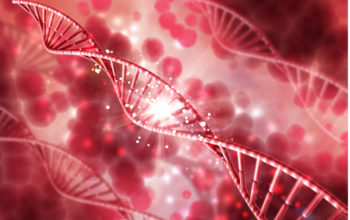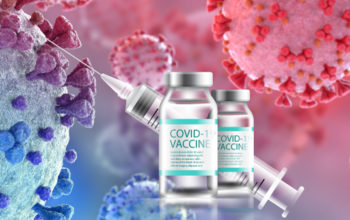
Date: 20th April 2020
The current COVID-19 pandemic, at time of going to press, has claimed over 152,000 lives worldwide, with just shy of 2.25 million confirmed cases. With testing being absolutely key to limiting the spread of the virus, world scientists have met this unprecedented challenge with extraordinary effort and determination which has resulted in a plethora of different tests being available for use. Current testing for SARS-CoV-2 is largely based on quantitative RT–PCR (qRT–PCR) which can be a relatively lengthy process, but now scientists report the development of a rapid, easy-to-implement and accurate CRISPR–Cas12-based lateral flow assay to detect the virus.
The development of CRISPR-based products for diagnostics is gathering momentum. Their ease of use, speed, low-cost and high accuracy make them potentially very powerful tools for diagnosing a wide-range of conditions and diseases. We reported last week the development of CRISPR-based lateral flow assays for diagnosing post-kidney transplantation infections and rejection. With the likes of Sherlock Biosciences and Mammoth Biosciences; companies founded by pioneers of CRISPR, both developing their CRISPR-based diagnostic platforms to detect SARS-CoV-2, a team of scientists partly funded by Mammoth Bio have now reported the successful use of a CRISPR-based DETECTR assay in Nature Biotechnology.
The scientists led by Charles Chiu from University of California San Francisco, US, and Janice Chen from Mammoth Bio, developed their assay using DETECTR (DNA Endonuclease-Targeted CRISPR Trans Reporter). DETECTR allowed the simultaneous reverse transcription and isothermal amplification (using loop-mediated amplification) of RNA extracted from patient samples, to enable the targeting of predefined coronavirus sequences by Cas12 via specific guide RNAs. Once Cas12 bound its target sequences, it was also able to cut reporter molecules, and release a signal that was either visualised by a fluorescent reader or lateral flow strip.
The team designed the SARS-CoV-2 primers (for amplification) and guide RNAs and optimised the SARS-CoV-2 DETECTR assay, showing that it had a quick run time of 30–40 min. The Cas12 fluorescent signal was detectable in <1 min and a visual signal by lateral flow was achieved within 5 min. With DETECTR showing an analytic limit of detection (LOD) of 10 copies per ul input in this study, the assay is less sensitive than the FDA EUA-approved qRT–PCR assay developed by the US Centers for Disease Control and Prevention (CDC) (LOD of 1 copy per μl input), however, the sample-result time was far quicker – 45 mins versus 4 hours.
For validation on ‘real-life’ samples the team tested the assay on extracted RNA from 11 respiratory swab samples collected from six qRT-PCR-positive COVID-19 patients and 12 nasopharyngeal swab samples from patients with influenza and common human seasonal coronavirus infections. Using DETECTR, SARS-CoV-2 was detected in 9 of 11 patient swabs and did not cross-react with other respiratory viruses. The two swabs from COVID-19 patients that were false negatives were confirmed to be below the established LOD for the DETECTR assay.
A blind test was then performed using an additional 60 nasopharyngeal swab samples from patients with acute respiratory infections. By qRT–PCR testing, half were confirmed to be positive for SARS-CoV-2 whilst the rest were negative. The DETECTR assay was 100% accurate for negative samples, and 95% accurate for those positive for the virus.
Conclusion and future applications:
The team here have combined isothermal amplification with CRISPR–Cas12 DETECTR technology to develop a rapid test for detection of SARS-CoV-2 in clinical samples. Furthermore, the assay offers advantages over current methods as it does not require laboratory infrastructure and equipment, and the simple lateral flow readout is an accessible and easy-to-use reporting format.
Indeed, whilst there is the question of LOD differences between the DETECTR assay and the current FDA-EUA-approved assay, clinical validation of DETECTR is ongoing, and it is likely that the team will also seek FDA Emergency Use Authorization. With the ultimate aim here being to develop the assay into a portable microfluidic-based cartridge with lyophilised reagents, there is the exciting prospect of using the assay at point-of-care and in the field; whether in the clinic, at airports, or even at home it is hoped this simple test can make a significant difference in the fight against this pandemic.
With a rapid development and validation time of this SARS-CoV-2 DETECTR assay of less than two weeks this tech is potentially also quickly adaptable as a tool to diagnose other infections, if mobilised quickly enough at the early stage of any newly emerging zoonotic virus perhaps the spread of such diseases can be greatly diminished. With the development, optimisation and validation of such technologies now in this current pandemic, we will hopefully find ourselves better equipped in the future.
Broughton, J. P., X. Deng, G. Yu, C. L. Fasching, V. Servellita, J. Singh, X. Miao, J. A. Streithorst, A. Granados, A. Sotomayor-Gonzalez, K. Zorn, A. Gopez, E. Hsu, W. Gu, S. Miller, C.-Y. Pan, H. Guevara, D. A. Wadford, J. S. Chen and C. Y. Chiu (2020). “CRISPR–Cas12-based detection of SARS-CoV-2.” Nature Biotechnology.
https://doi.org/10.1038/s41587-020-0513-4

